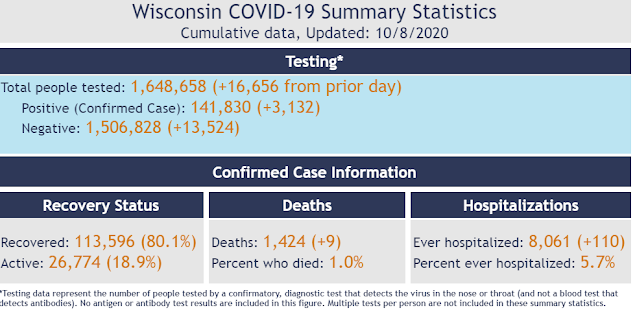Where does Reimert fit into my family.
He was my 2nd cousin.
His mother, Kristine, was a 1st cousin to my dad & his siblings;
Valdemar, AneMarie, Christian, Halvdan, and Johanne.
His mother, Kristine, was a sister to Aage, Vagner, Christ, Hjalmer, Kamma, Edel Petersen.
Kristine was the oldest of those Petersen kids,
so that made the generations seem off,
she was 30 years older than my Dad, Valdemar.
That kind of age difference makes for confusion in deciphering 'who is what level of cousin'.
Reimert was such an interesting man and I am lucky to have been able to visit with him and his wife Betty in their Seattle home a number of years ago. The house and gardens were so lovely, I'll never forget the roses that were about the size of a softball.
Four years ago, when I had traveled Out West, it was in my plan to visit Reimert & Betty again, but the weather was crazy with huge waves , I think they said it was like a tornado came in off the ocean, anyway, I was uncomfortable having to take the ferry.
So, instead, I called him on the phone and we had a long and interesting chat.
Of course, now I regret not having called him again between then and now.
He was always very complimentary and supportive of the work that our Luck Alumni Scholarship group has done.
Another good Dane has left this earth.
 |
| Reimert Thorolf Ravenholt |
Reimert Thorolf Ravenholt, 95, died October 1, 2020, at his home in Seattle, Washington. He was born in West Denmark, Wisconsin, March 9, 1925, the sixth of ten children of Ansgar and Kristine Petersen Ravnholt.
Reimert was raised on the family’s small dairy farm which had been homesteaded by his Danish immigrant grandparents. He did not speak English until he began public school. Reimert remained deeply proud of his Danish heritage throughout his life and greatly enjoyed maintaining Danish traditions within his family and among his friends especially during the holidays.
As a young boy and teenager, Reimert milked cows at home and as a hired hand on neighboring farms. He plowed behind horses (The family never owned a tractor), used an ax and a two-person crosscut saw with his brothers to fell and chop the wood needed for heating and cooking, and hauled water from a well to the house. The family farm was lost to foreclosure during the Great Depression, and the family lived on a succession of rental farms until the oldest sons, who had gone off to work, made enough money to buy another farm for the family.
After graduating from the Luck, Wisconsin, High School in 1943, Reimert went to Minneapolis where he supported himself for a year with a variety of part-time jobs until he qualified for in-state tuition at the University of Minnesota. There he entered an accelerated pre-med and medicine program from which he was graduated with an M.D. degree in 1951. After a residency at the VA Hospital in San Francisco, Reimert was recruited by Dr. Alex Langmuir into the second class of the Epidemic Intelligence Service of the Centers for Disease Control. This began his life-long involvement in epidemiology.
Reimert came to Seattle in the early 1950s to work as Director, Epidemiology and Communicable Disease Control Division, for the Seattle-King County Health Department. From this position, he organized and oversaw the first mass immunization of Seattle school children with the Salk vaccine against polio; traced an outbreak of staphylococcal infections among new mothers in Seattle to the lack of appropriate handwashing and other sanitary protocols in the newborn nurseries of local hospitals; undertook what was likely the first epidemiological survey by telephone; and provided the water-borne disease surveillance that supported the creation of a sewer system around Lake Washington.
In 1956, Reimert earned a Masters in Public Health degree from the University of California/Berkeley from which he was graduated first in his class. Shortly afterward, he was appointed Epidemiology Consultant, European Region, U.S. Public Health Service, American Embassy, Paris, France, where he served for two years. While there, he investigated an outbreak of diphtheria in Switzerland and the reappearance of smallpox in Yorkshire, England, on behalf of the U.S. Public Health Service. After his return from France, Reimert was named an Associate Professor of Preventive Medicine at the University of Washington. During this period, he began his life-long crusade against the negative health impacts of tobacco use which he termed “tobaccosis.” Among other actions, he undertook some of the earliest epidemiological research among mothers of newborns that demonstrated the adverse impact of the mother’s smoking history on the birth weight of her child. In collaboration with the editor of the student newspaper, he helped stop the free sampling of cigarettes to students on the UW campus and the sale of cigarettes on campus to minors. He also successfully lobbied for the removal of cigarette vending machines from the UW Hospital. Additionally during his tenure at the UW Medical School, his article “Malignant Cellular Evolution” was published in The Lancet and provided the conceptual basis for understanding the impact of tobacco-generated mutagenic substances circulating through the bloodstream to the entire body.
From 1966-1979, Reimert served as the first Director of the U.S. Agency for International Development’s Office of Population (now Population and Reproductive Health). When he took charge of USAID’s nascent population program in 1966, the program had no staff, budget, or mandate. Few developing country governments outside of Asia wanted anything to do with subjects as controversial as population growth and family planning, and there was great debate about whether family planning programs worked. Many doubted that couples would use family planning services and, if couples did use them, that the services would have any impact. But Reimert believed that people would use family planning and that it would have a global demographic impact. He was right. When Reimert started in this field, average family size was 5 births per woman worldwide. It is 2.3 today.
During his 14-year tenure, USAID’s global population/family planning assistance program became the world’s foremost population program, providing more than half of all international population/family planning program assistance ($1.3 billion) during those years. Many of the approaches that were pioneered under Reimert’s leadership, such as routine survey data collection (He originated the World Fertility Survey, the precursor of the Demographic and Health Survey, which stands today as the gold standard of household survey data collection in the developing world.), working through non-governmental organizations, social marketing, and community-based services continue today as standards of strong voluntary family planning programs. He further understood that the then available contraceptive methods were not appealing to all users and ensured that the Office of Population established a strong central contraceptive research program. Almost every contraceptive method available today has received USAID funding or support. He was a pioneer in international family planning, a champion of every woman’s right to control her own fertility.
At the end of his public health career, Reimert served for brief periods as Director, World Health Surveys, CDC; Assistant Director for Research and Epidemiology, National Institute on Drug Abuse where he developed a method for estimating the real impact of tobacco use on causes of death; and Chief, Epidemiology Branch, U.S. Food and Drug Administration.
Throughout his career, Reimert applied his creative intellect and his persistent effort to some of the largest public health issues of his time. The success he achieved was due in great part to his relentless focus on the bottom line. Concern for political expediency or political acceptability was not a factor in his action plan.
After retirement in 1987, Reimert returned to Seattle to be near all his children. He also found time in retirement to pursue his interest in historical epidemiology. He did considerable research on the late effects of 1918 influenza and researched and published extensively on the cause of death of Meriwether Lewis which he found to be suicide caused by the effects of tertiary syphilis. In Seattle he was an active participant in the Danish Club and a member of the Northwest Danish Association and National Nordic Museum.
Reimert loved sharing and discussing ideas. No tradesman or friend left his house without a copy of at least one of his articles and a strong memory of his intellectual passion. He was an open-hearted, generous man who did not bear grudges or carry resentments through his life. “Understanding brings forgiveness,” he often said. Hospitality was at his core. Everyone was welcomed and well fed. To say that an event at the Ravenholts’ home had been “hyggelig” was, in his opinion, the highest praise. Reimert was devoted to his wife and family and was a large presence in their lives. His last “job” - being bedstefar to his grandchildren and oldefar to his great-granchildren – was perhaps his favorite.
Reimert was preceded in death by his parents; his nine siblings Thora, Albert, Halvor, Johanne, Eiler, Otto, Gerda, Agnes, and Astrid; and his first wife Mildred Froysland. He is survived by his wife of thirty-nine years Betty Butler Ravenholt; five children Janna (Jim) Kent, Stark (Kathy Pavlich), Lisa (Ed Belsheim), Dane, and Matthew Howell; five grandchildren Chad (Lia Chiarelli) and Ty Kent, Sophia Belsheim (Sean Shim-Boyle), and Ry and Zane Ravenholt; and two great-grandchildren Harper and Flora Kent. Funeral services will be held in West Denmark, Wisconsin, in the spring. Remembrances may be made to West Denmark Lutheran Church, 2478 170th Street, Luck, WI 54853 or to Planned Parenthood of the Great Northwest and Hawaiian Islands, P.O. Box 3641, Seattle WA 98124.
















































